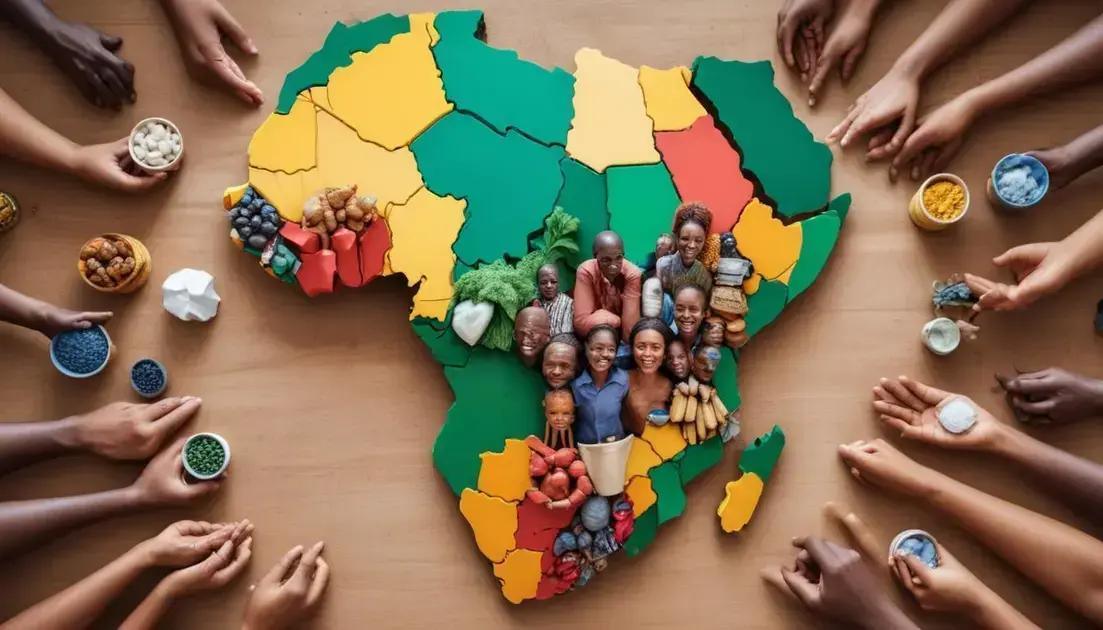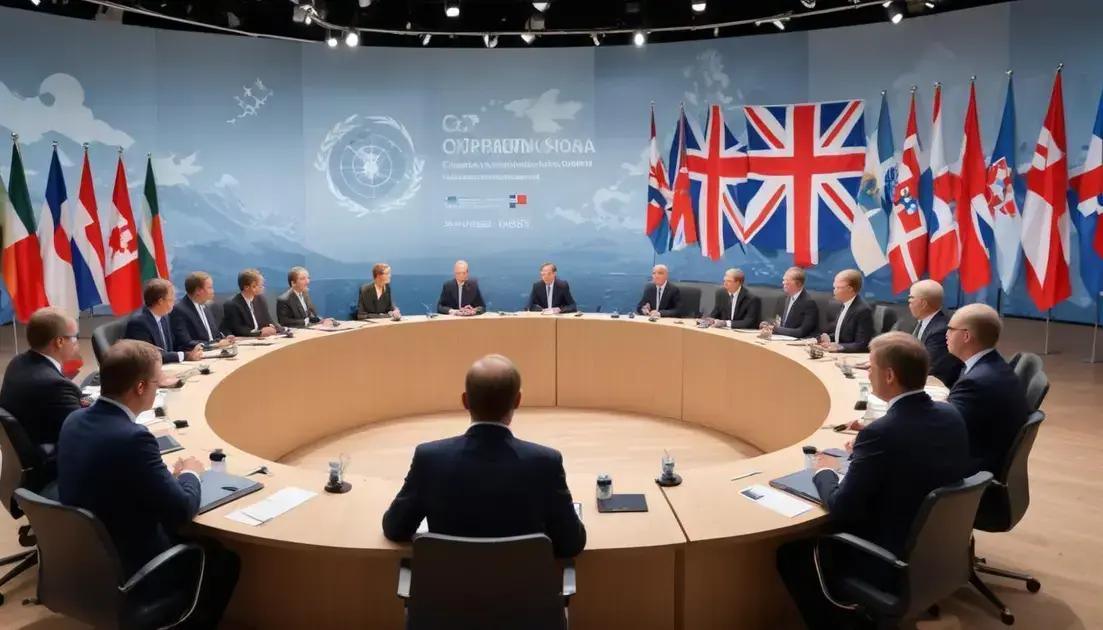
Paris Agreement: Global Climate Pact
The Paris Agreement is a global effort aimed at reducing climate change by limiting global warming to below 2 degrees Celsius. Nearly 200 countries have committed to setting their own targets, known as Nationally Determined Contributions (NDCs), to lower greenhouse gas emissions. This collaborative approach also emphasizes the importance of supporting developing nations and increasing public awareness. As technology advances and global partnerships strengthen, the prospects for a sustainable future become more promising.
Have you heard about the Climate Change efforts stemming from the Paris Agreement? This historic pact aims to unite nations in the fight against global warming…
What is the Paris Agreement?
The Paris Agreement is a global deal aimed at tackling climate change. Signed in 2015, it brings together nearly 200 countries. Each nation pledged to reduce carbon emissions and limit global warming.
One key goal is to keep the temperature rise below 2 degrees Celsius. The agreement encourages countries to aim for even lower targets, like 1.5 degrees. This helps communities adapt to climate challenges.
How It Works
Countries set their own targets, known as Nationally Determined Contributions (NDCs). These commitments are reviewed every five years to ensure progress. Regular meetings help nations share successes and challenges.
Global Participation
Nearly every country in the world is part of the Paris Agreement. This includes both developing and developed nations. By working together, they hope to achieve greater impact against climate change.
Each country is responsible for monitoring its own progress. This transparency holds nations accountable and builds trust among members.
The Importance of the Agreement
The Paris Agreement represents a major step toward a sustainable future. It emphasizes cooperation across borders and encourages innovative solutions. As nations work together, the hope is to inspire individuals and organizations to take action.
Goals of the Agreement
The goals of the Paris Agreement focus on reducing global warming and addressing climate change. One main target is to limit the rise in temperatures to below 2 degrees Celsius. This is crucial for protecting our planet.
Another goal is to pursue efforts to keep the temperature increase below 1.5 degrees Celsius. This can help avoid severe impacts on communities and ecosystems.
Nationally Determined Contributions (NDCs)
Countries commit to goals through their Nationally Determined Contributions, or NDCs. Each country decides its own path to reduce greenhouse gas emissions. This allows them to set realistic goals based on their abilities and circumstances.
Adaptation and Resilience
Adaptation is another essential goal. Countries need to adapt to climate impacts that are already happening. This means building resilience to protect communities and infrastructure.
Support for developing nations is also key. Wealthier nations are encouraged to provide financial help and technology to those in need. This support can help strengthen their efforts against climate change.
Global Cooperation
The Agreement emphasizes the importance of global cooperation. By working together, countries can share knowledge, resources, and best practices. This collaboration increases the chances of achieving meaningful outcomes.
Global Participation
Global participation is one of the key elements of the Paris Agreement. Almost every country on Earth is part of this historic pact. This united effort shows that climate change is a global problem that needs everyone’s attention.
Each member country is responsible for setting its own climate goals. These commitments are known as Nationally Determined Contributions (NDCs). This allows countries to choose targets that fit their unique circumstances and capabilities.
Why Participation Matters
When countries participate, they share their progress and results with each other. This collaboration helps inspire actions that can lead to a greater impact. By working together, nations can learn from both successes and challenges faced in their climate efforts.
Support for Developing Nations
Developed countries are encouraged to support developing nations. This can be through financial aid, technology transfer, or training resources. This support helps poorer countries to meet their NDCs and build resilience against climate impacts.
Empowering these nations is crucial because they often face the most severe effects of climate change. By lifting them up, the whole world benefits.
Regular Meetings and Updates
Countries meet regularly to review their commitments at global summits. At these meetings, they assess progress and set new goals. Open discussions create opportunities for nations to strengthen their commitments and increase their climate action.
Impact on Climate Change
The impact on climate change due to the Paris Agreement is significant. This global pact aims to curb greenhouse gas emissions worldwide. By working together, countries can reduce their carbon footprints and slow global warming.
One major effect of the agreement is raising awareness. The efforts spotlight the importance of taking action against climate change. People and businesses are more informed about their roles in this challenge.
Monitoring Emissions
The Agreement encourages countries to regularly track their emissions. This transparency is crucial for holding countries accountable. It shows the world how each nation is progressing toward its climate goals.
Encouraging Renewable Energy
Another positive impact is the push for renewable energy sources. As nations commit to cut emissions, they often turn to cleaner energy. This means more solar, wind, and hydroelectric power. These energy sources are better for the planet.
Protecting Ecosystems
Reducing emissions also helps protect ecosystems. Healthy forests and oceans play a vital role in absorbing carbon dioxide. By focusing on conservation, the Agreement supports these natural systems.
Moreover, the collaboration between nations strengthens community resilience. Together, countries are better equipped to handle extreme weather events caused by climate change.
Future Prospects
The future prospects of the Paris Agreement look promising but also challenging. Many countries are taking stronger actions to meet their climate goals. There’s a growing interest in sustainable practices across the globe.
Technology is evolving quickly, helping nations reduce emissions. Innovations in renewable energy, like solar and wind power, are becoming more common. These technologies help lower our carbon footprint.
Increased Cooperation
As more countries join the effort, cooperation is key. Nations are learning from each other, sharing best practices. Global partnerships strengthen commitments and inspire more action.
Engagement of Businesses
Businesses are recognizing their role in fighting climate change too. Many companies are adopting greener practices. This includes reducing waste and improving energy efficiency. These changes not only help the planet but can also save money.
Public Awareness and Action
Public awareness is on the rise. More people are becoming concerned about climate change. As communities engage in discussions, they hold their leaders accountable. This grassroots effort is essential for pushing policies forward.
Finally, the impacts of climate change continue to grow. This urgent situation amplifies the need for a collective response. The world must stay committed to ensuring a healthier planet for future generations.
Conclusion
In conclusion, the Paris Agreement is a vital step in combating climate change. Through global cooperation, nations work together to reduce emissions and support each other. This effort helps protect our planet and its ecosystems.
As more countries engage in sustainable practices, the future looks brighter. Advancements in technology and greater public awareness drive change, empowering communities to take action. Businesses also play an important role in reducing their impact on the environment.
Together, these efforts aim to create a healthier world for future generations. By staying committed to these goals, we can make a real difference in the fight against climate change.


